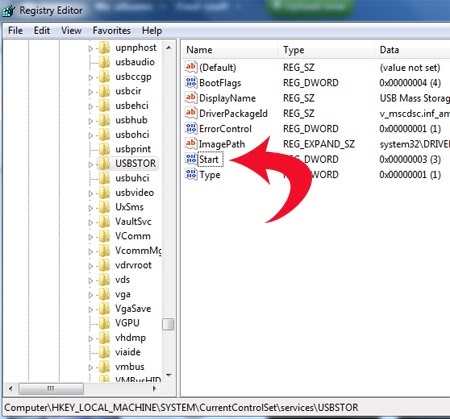Do you want to Disable your USB Ports? Do you want to Turn Off your USB Ports without installing or paying for anything? Don’t you hate it when people who borrow your PC or Laptop just plug in their infected USB Flash Drives and Flash Disks and rendering your system next to useless? There is a way to prevent that and so far it is the most economic way that I have yet used since you won’t have to purchase anything nor have to remember any password just to make your USB Ports protected from unwanted usb flashdisks.
This method is useful as it only renders USB Flash Disks, Flash Drives, Memory Cards, or any file storage devices useless leaving other usb powered devices such as USB Mice, USB Keyboards, USB Powered Bluetooth Devices among others working without a hitch.
First off, Do this at your own risk, I am not liable for any damages that this method does on your PC or Laptop. Second, this method works only for Windows OS Powered systems. So if you are either using a MAC or a Linux System, you would not even have to worry about getting infected with viruses in the first place.
1) Start by opening your Registry Editor by typing “regedit” (without quotes) on the Start>Run>Run window for Windows XP and on Windows button>Search bar for Windows 7 and Windows Vista.
2) From there a window should pop out something similar like this:
3) From there on out navigate through these registry key folders:
HKEY_LOCAL_MACHINE/SYSTEM/CurrentControlSet/Services/USBSTOR
Once you are in the USBSTOR folder you would see different registry keys on the left pane. Now its time to make a Backup Registry Key for that Registry Value. Just highlight the USBSTOR Folder and click “File” on the upper left of the window and choose Export. Now save it on an accessible place like the Desktop. Try to name it to something like “USBEnabled” or something easy to recognizable.
4) Now look for the “Start” registry key on the left panel and right click on it.
5) Choose “Modify” and change the value of 3 to 4 and click ok.
6) Now again choose the USBSTOR folder and click on the File and Export it again saving it on an accessible place like the desktop but this time renaming it with something like “USBDisabled” or something recognizable.
And that is basically it. Now if you would need to enable your USB Ports for Flashdrives just right click on the exported registry file named as “USBEnabled” or something similar that you just saved and click “Merge” and just do the same on the other file to disable your USB Port from recognizing USB Flashdrives but still sparing other usb powered devices to work without a hitch.
NOTE: Make sure that you there are no plugged in Storage Devices through your USB Ports when enabling or disabling your USB Ports or else those storage devices would not be affected from the changed registry values (e.g. a plugged in usb flashdrive would not get disabled if you changed the registry values to “disabled” if its still plugged in and vice versa).























0 comments:
Post a Comment